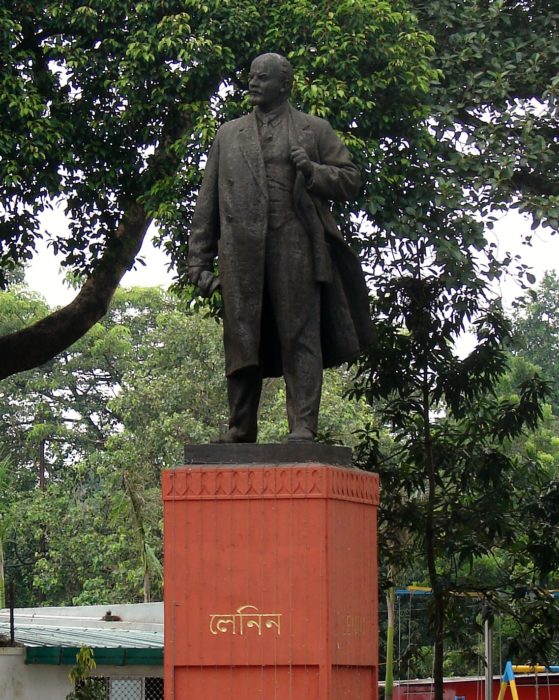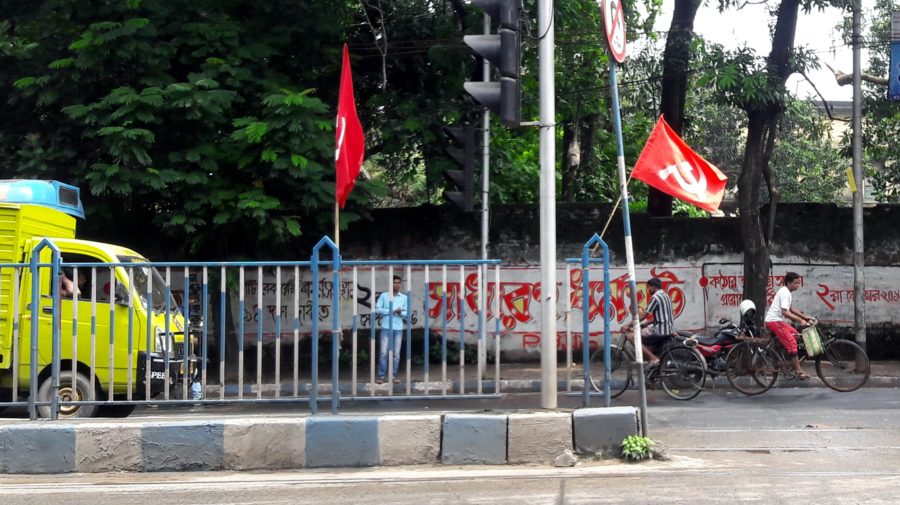9th September 2016 Kolkata, India
From Belarus to … Bengal!
Last December, I flew in for the last time to Minsk, the city of my previous posting. As the aeroplane descended through the clouds, a pale whitish landscape emerged – there had been a light snow fall. Like many Britons, the sight of snow cheers me – I think it’s because we see it only occasionally.

We left Minsk the following month by car, and drove slowly west back to Britain. By then, the snow was deep, and it was -15 C. As we meandered back across Belarus, Poland and Germany, the snow levels gradually lowered and the temperatures rose. When we reached the German-Dutch border, there was no snow and it was above freezing. We were back in the mild, maritime climate of the Atlantic seaboard.
Two months ago, I flew into my new home city. This time, as we started our descent, I saw a very different colour: a silvery grey, far less green than I had expected. It was late in the day, and the landscape appeared monochrome.
It slowly dimmed on me that I was looking at standing water. As we got closer to landing, I could see more clearly the large areas of flooded fields, and in the distance the winding channels of the delta of the great Ganga river. I was looking at a monsoon landscape. When I got out of the air-conditioned comfort of the airport, I felt the heavy, scented tropical air of Bengal for the first time.
The contrast from six months before could not be starker.
It’s not just climate. The most striking difference is in population – both absolute and density, which are on a completely different scale. There are about nine and a half million people in Belarus, less than half the population of greater Kolkata alone. The states of East and North East of India – the ones we cover from Kolkata – have a combined population 35 times that of Belarus, in an area about four times as large.
So why have I come to such a different place?
It is by choice. Most of the jobs inside the Foreign & Commonwealth Office (FCO) are competed for. I had wanted to be an ambassador, and Minsk came up at the right time. I was intrigued (and, judging from her blog, my successor Fionna Gibb is finding it as intriguing as I did). The job had the added attraction of learning another language.
As Deputy High Commissioner in Kolkata, I head up a subordinate post, in the largest network we have in any country. I need to operate in a very different way, and co-ordinate with lots of fellow UK colleagues.
India’s history was intertwined with that of Britain for 200 years. India is the world’s largest democracy, and it is vast and varied. It is also undergoing a major transformation in its economy and its place in the world. The level and range of our engagement with India is in a different league from our engagement with Belarus.
I’m sure I’ll write about many more of the attractions of India in some of my future blogs. The differences from Belarus were very much part of the attraction of the job.

There are one or two similarities. Between 1977 and 2011, the state government of West Bengal was dominated by the Communist Party. Belarus is still largely unchanged from Soviet times, with many statues of Lenin and street names unchanged, and an economy dominated by the state.
I sought out Lenin’s statue in Kolkata to see how he looked in a tropical climate. I’ve seen a few hammer and sickle symbols in Kolkata, but not as many as I had expected. Bengalis I’ve spoken to about the state government assure me that the Communism practised wasn’t particularly harsh – nothing like the repressive regime that Soviet Russia was.

Whereas the British Embassy in Minsk is on Karl Marx Street, here in Kolkata the Deputy High Commission building is on a street named after the former Vietnamese Communist leader, Ho Chi Minh. There is also a connection with the British statesman Lord Curzon and borders – but that’s a subject for another time.
The similarities are superficial. I’m in a completely different country.
Congratulations Bruce and wishing you a good time there. I guess when we will meet next, you will speak with me in Bangla (??).
And enjoy spicy food as well….
Cheers
Thanks Rashed. I plan to take some Bangla lessons soon.
Hi Bruce, cannot wait for the next, extremely interesting and as many Brits we know nothing of India so I look forward to seeing your part of India through your eyes.
Thank you. I plan to write a lot about contemporary India.